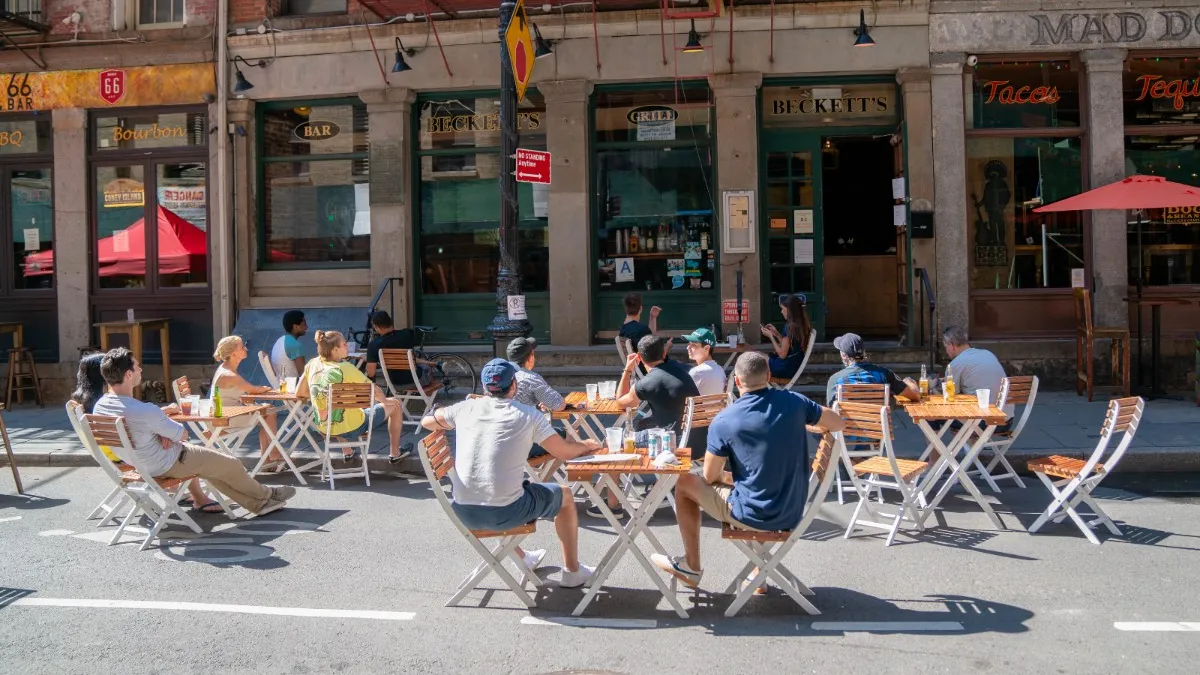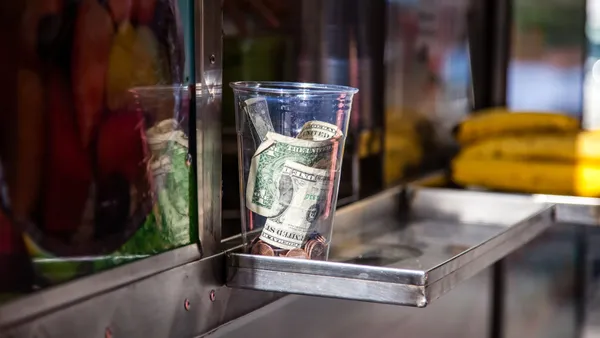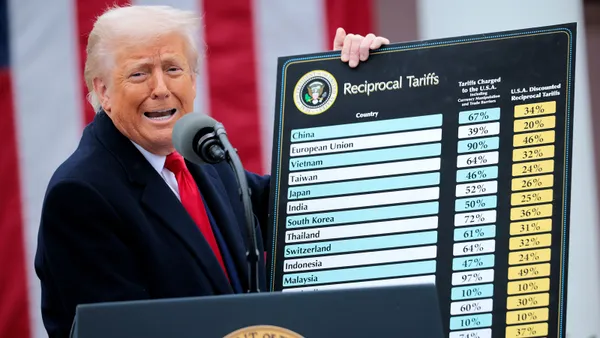UPDATE: Oct. 21, 2020: A Barron County Circuit Court judge on Monday denied a request to extend a temporary hold on Wisconsin Gov. Tony Ever's order restricting indoor dining capacity at restaurants and bars to 25%. The order is now back in place through Nov. 6. The judge said court filings didn't indicate whether bars and restaurants were complying with Ever's capacity restrictions before they were put on hold, and argued it was unclear if these businesses were actually being hurt by the measure, The Wall Street Journal reports. A lawyer from the Tavern League of Wisconsin, which represents bars and restaurants, said he plans to appeal the ruling.
Dive Brief:
- A Wisconsin County Circuit Judge temporarily blocked Wisconsin Governor Tony Evers' order limiting indoor dining capacity at restaurants and bars to 25%, NPR reports. Evers' order was initially put into place Oct. 8 in response to rising coronavirus cases in the state and would have lasted through Nov. 6. The ruling comes in response to a lawsuit by The Tavern League of Wisconsin, the Sawyer County Tavern League and the Flambeau Forest Inn, which argued this capacity restriction "will result in a devastating loss of customers, sales, and revenue" and put restaurants "substantially or entirely out of business."
- Prior to the Oct. 8 order, restaurants and other retail businesses could fill their businesses up to 50% capacity. The restrictions followed a spike in COVID-19 cases in the state — on Tuesday, Wisconsin saw a record 3,279 new confirmed cases and 34 newly reported deaths. The judge's temporary block of Evers' order will remain in place until the suit is resolved. Attorney for the Wisconsin Department of Health Services are required to appear in court Monday to defend the order.
- The Independent Restaurant Coalition said in August that 50% capacity isn't enough for independent restaurants to stay open, arguing that operators need at least 60% capacity to survive the pandemic. Operating at 25% could be a death knell for restaurants balancing on razor-thin margins. The Flambeau Forest Inn, for example, claims that Wisconsin's 25% capacity order would limit its restaurant's capacity to 10 people — five customers and five employees needed to operate the restaurant. This would force Flambeau to close, according to the lawsuit.
Dive Insight:
The Wisconsin Restaurant Association objected to the 25% restriction when it was announced on Oct. 6, stating on its website it would "lobby to eliminate restrictions as soon as possible using data to show that restaurants using best practices are not the cause of COVID-19 cases." This capacity reduction would be particularly dire in Wisconsin as winter weather approaches, further compromising outdoor dining solutions.
This may be why there was such abrupt pushback to the 25% capacity limit. As one Wisconsin restaurant owner told the Milwaukee Journal Sentinel, Evers' decision "could be the final dagger" for the industry. A restaurant owner in Iowa also told Eater that 50% capacity doesn’t work, "unless the landlord gives you 50% rent" and the energy company is "giving you 50% off the [energy] bill."
Still, these capacity restrictions are put into place for a reason. A September report from the Centers for Disease Control and Prevention found that adults who have tested positive for COVID-19 were approximately twice as likely to have reported dining at a restaurant in the two weeks before becoming sick. That report isn't the first time a correlation has been drawn between indoor dining and rising cases. JP Morgan noted in June that higher restaurant spending was linked to a faster spread of the coronavirus about a month later.
Wisconsin's administration has plenty of reason to be mindful of these trends. In addition to new cases and death, hospitalizations in the state are also setting records. As such, Evers called the judge's ruling a "dangerous decision" and encouraged residents to stay the course while he challenges the judge's decision.
Restaurants across the country have been navigating disparate dine-in capacity restrictions for months, and the outlook for the restaurant industry remains bleak. As the possibility of another business-saving stimulus fades, that picture is likely to get even bleaker.
Pushing back against restrictions may be the industry's last recourse to keep restaurants open. More lawsuits in response to restrictions have already occurred elsewhere. In September, for example, a federal judge ruled that Pennsylvania Governor Tom Wolf lacked the constitutional authority to close businesses or set capacity limits. This ruling, along with the Wisconsin ruling, may provide some optimism for restaurants throwing a Hail Mary to remain open through legal means.













